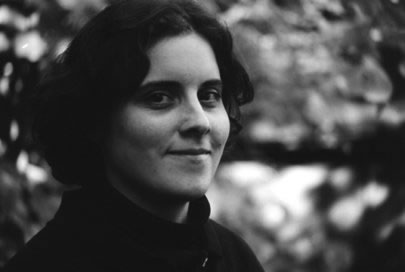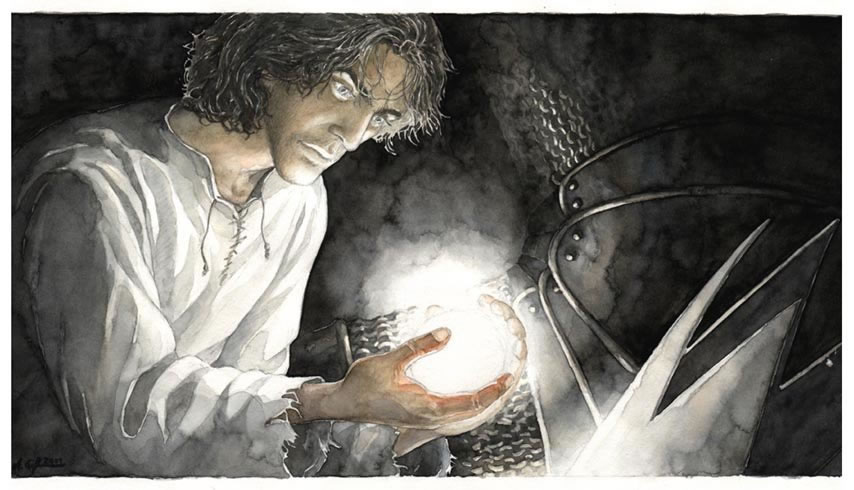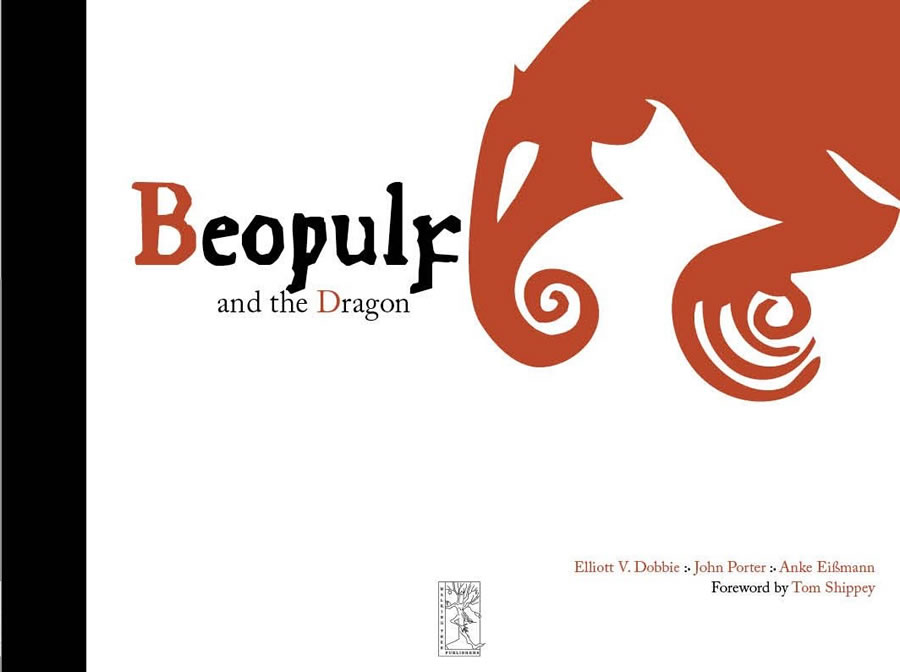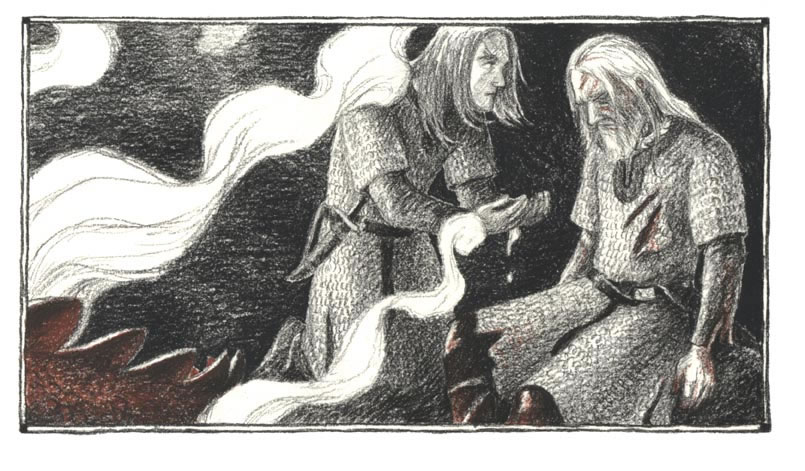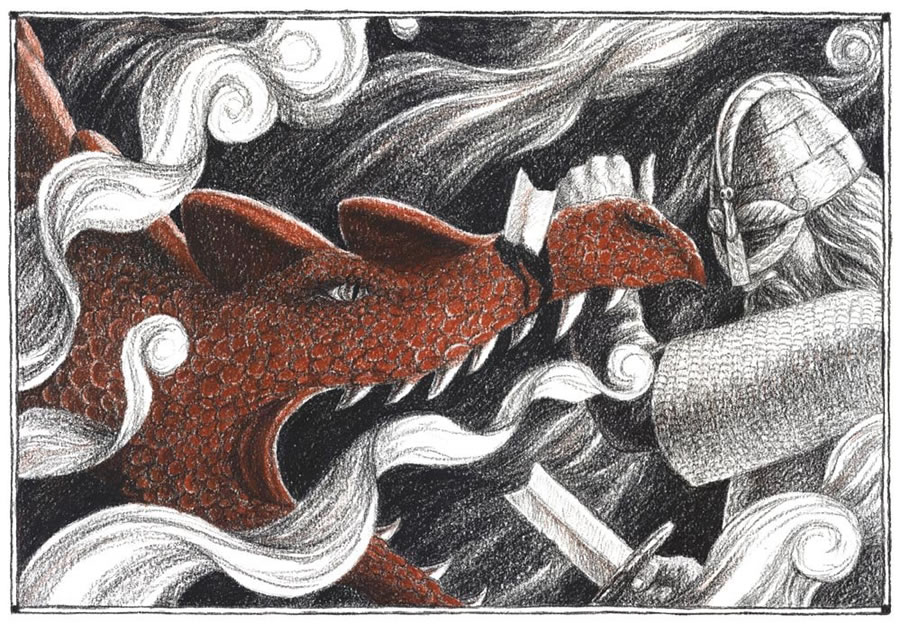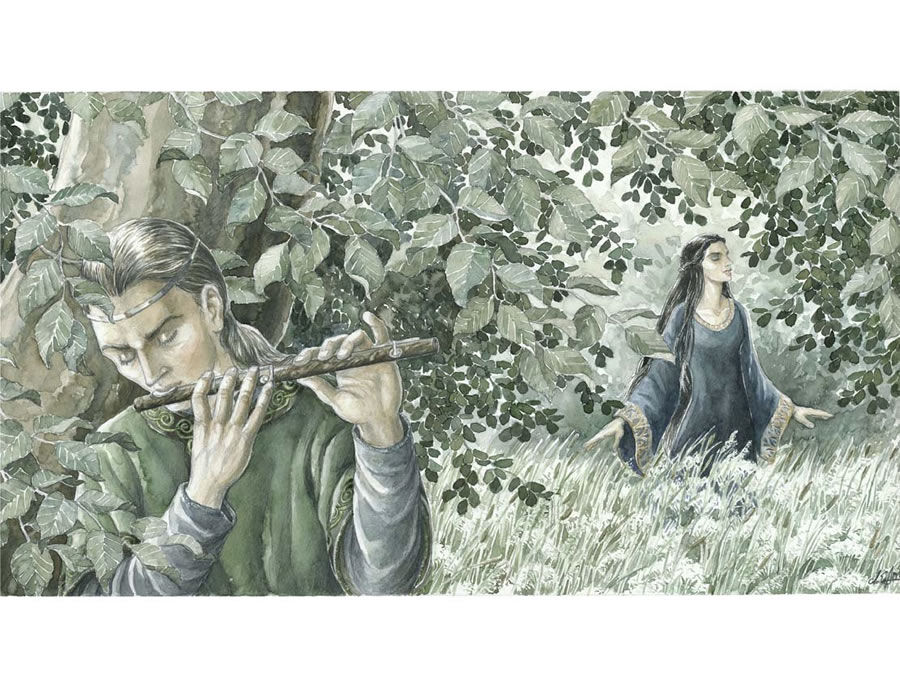Interview with Anke Eißmann (05.02.10 by Pieter Collier) -
Comments
Anke Eißmann is well known for her artwork and illustrations for tolkien's works. After studying visual communication in Weimar (Germany) Anke attended Colchester Institute (UK) for one year to improve her skills in graphic design. At present she teaches art at the Johanneum Gymnasium in Herborn (Germany). Her illustrations and artwork are held in high esteem. Some of Ankes illustrations and further information may be found on her website at anke.edoras-art.de.
In the following interview Anke gives an account of her relationship to Tolkien and his works, her passion for art as well as the luxury edition of the “Dragon Episode” taken from Beowulf which is published by Walking Tree Publishers. The interview was conducted by André Gand and published on November 21th, 2009 at tolkien-buecher.de. We wish to thank him to give the kind permission to reproduce this interview here.
André: How did you encounter Tolkien?
Once I started reading them in English a whole new world of primary and especially secondary literature opened up. Well, and so I was doomed... Eventually my artwork appeared on the internet, where it was seen by a certain Mr. Bülles of the German Tolkien Society, who invited me to exhibit it at some obscure events of theirs called the “Tolkien Thing”. This was back in 2000. I signed up for membership right away. That same year I also attended Oxonmoot in Oxford for the first time, with more events following, the most important of which surely was “Tolkien 2005” in Birmingham. And there is no end in sight.
André: Your illustrations for tolkien's works are known worldwide. How did this begin? Was there a particular scene in tolkien's work which especially inspired you?
Most excellent: there are plenty horses and ponies in the book. Therefore I started out with scenes featuring equestrian topics. Only later hobbits, men, elves and dwarves started to appear more and more. I cannot think of one particular scene that inspired me, although there are some passages (not just in LotR) I have illustrated repeatedly and to which I return regularly. And there are certain characters - well, I think my preferences in that regard are rather well known, and manifested in many depictions of a certain younger brother of Boromir of Gondor.
André: Tolkien also created own artwork for his books. Most of those have been compiled in J.R.R. Tolkien. Artist and Illustrator (edited by Wayne G. Hammond and Christina Scull). Has tolkien's own artwork been an inspiration for you?
In some of my pictures you'll be able to detect especially the latter. The book Pictures by Tolkien was one of the first works of secondary literature I acquired after having read The Lord of the Rings for the first time.
André: Is there one of your own tolkien-illustrations you are particularly proud of, or which you like especially?
André: Except for tolkien-inspired illustrations: which other artistic interests do you have?
Another field I'm interested in is animation. During my studies I created some animated short-films, and I'd like to do so again, but at the moment I sadly lack the necessary time.
André: The Old English epic poem Beowulf is closely linked with Tolkien, and Walking Tree Publishers are going to publish a luxury edition of the “Dragon Episode” from Beowulf, in the production of which you have been involved to a great extent. Could you tell us something about the luxury edition? Where did the idea to publish it come from?
For the latter I chose the one by John Porter which I liked best. For the purpose of the final project I created a hand-bound “one off”. Afterwards, nothing happened with it for several years. I had always dreamed about getting the book published, but the search for a suitable publisher proved to be difficult. To produce the book was going to be expensive and risky, as it it's not “mainstream”. In 2008, during a visit of Frankfurt Book Fair I finally had the idea of contacting Walking Tree Publishers. They had already used some of my tolkien-inspired paintings as cover-illustrations for some of their publications, and other artwork, too, for example for Roots and Branches by Tom Shippey. Since my book's introduction mentions Tolkien I hoped that it would have link enough to the professor's works to make WTP accept Beowulf and the Dragon for publication, and be willing to face the risk of producing and financing a “luxury” edition. After all, it's rather different from their other publications. However, WTP supported me right from the start. Together we discussed the next steps. I am very grateful for their support and advice, in particular for Thomas Honegger's corrections and proof-reading of the Old English text. I had been worried about copyright issues concerning John Porter's translation, but luckily he allowed us to use it for the publication. I am particularly pleased about the fact that Tom Shippey agreed to write a foreword. This is especially delightful because his book The Road to Middle-earth caused me to get interested in Beowulf in the first place.
André: This edition deals with the so-called “Dragon Episode” from Beowulf. Could you tell us briefly what this is about and why it was chosen for the book? Was there a particular reason why you did not use the entire Beowulf?
Moveover I found the dragon-episode more interesting, and somehow more “Tolkienesque” because of its links to The Hobbit, for example. This part deals with the aging hero Beowulf having to fight a dragon who ravages his realm after a thief stole a golden cup from its hoard (sounds familiar, doesn't it?). Beowulf sets out with his warband, but when battle threatens only the young warrior Wiglaf dares to stand by him, the rest of the warriors flee. Beowulf kills the dragon, but is wounded mortally.
André: How did you choose the motifs for this edition of Beowulf?
André: Often, publications by Walking Tree feature one of your illustrations on their covers. May we look forward to more of your paintings decorating books by Walking Tree in the future?
by: Heidi Steimel (Editor), Friedhelm Schneidewind (Editor)
Publisher: Walking Tree Publication
Publication Date: 15 Jan 2010
Type: paperback
Pages: 318 pages
Size: 23.2 x 15.4 x 2 cm
ISBN-10: 3905703149
ISBN-13: 978-3905703146
Spread the news about this J.R.R. Tolkien article:
